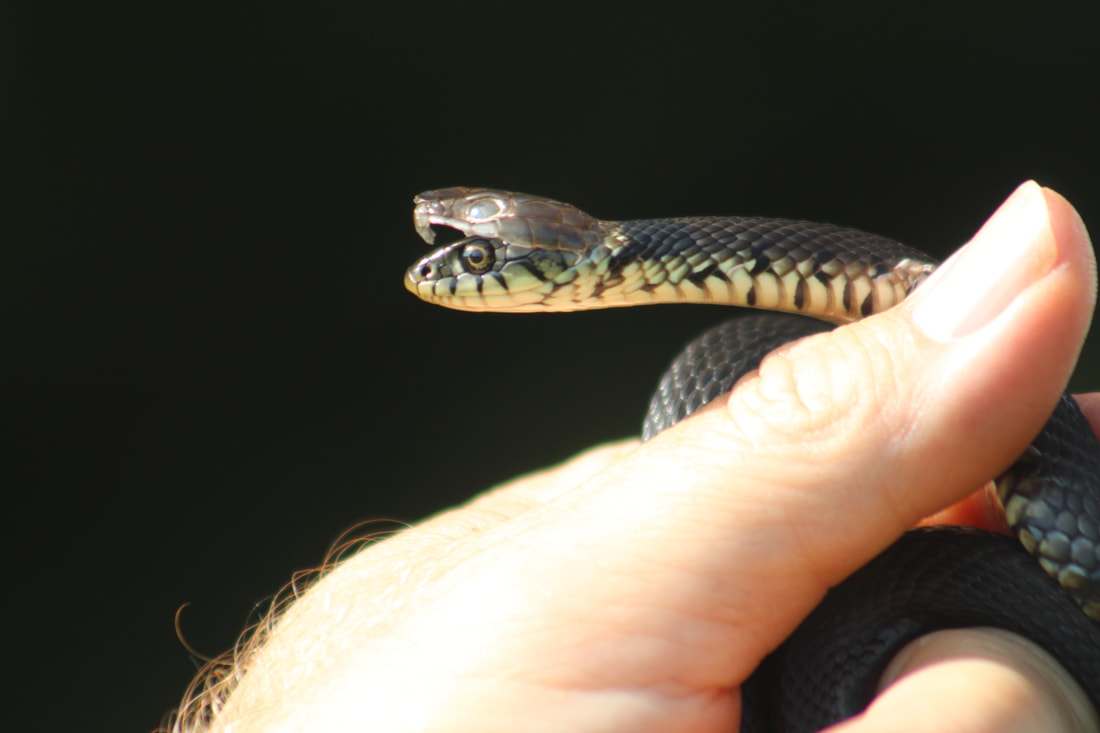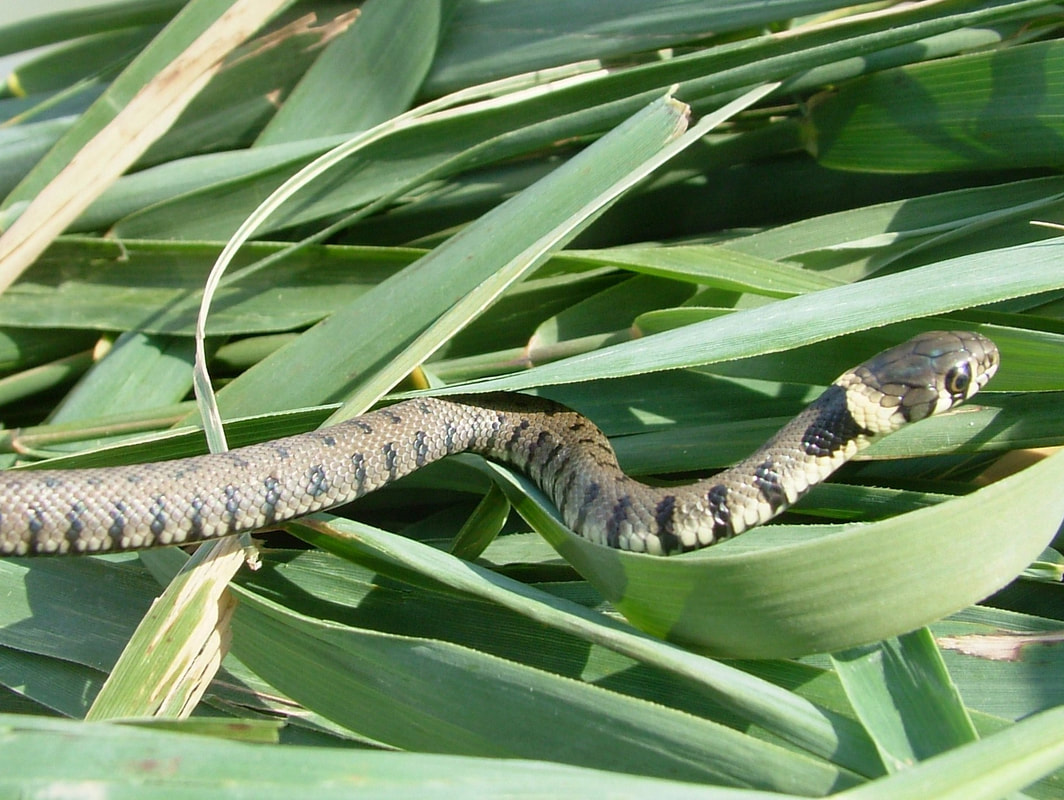|
A couple of weeks ago, a news story circulated the local press (Wirral Globe, Chester Standard) of dog walkers being worried about Grass Snakes being found using a park in Ellesmere Port (https://www.wirralglobe.co.uk/news/23469694.ellesmere-port-grass-snakes-spotted-rossmore-fields/). The tone of the articles was mostly concern about safety to pets and people by these snakes, with the disappointing confusion amplified by the journalist over whether they were venomous. The representatives of the Cheshire West Council did a sterling job reassuring these snakes are harmless. Even if they were venomous, as Adders are, their presence at a park should be no more concerning than the presence of a driveway, stinging nettles or changing weather – even in countries with dangerously venomous snakes, park users share the spaces with few incidents. From what we can tell, there are no photos to verify these were actually wild Grass Snakes, as opposed to escaped pets. Grass Snakes are not unheard of in south Wirral or Cheshire, sadly none known in the north other than old anecdotes from old Wirralians. We are examining maps about connecting habitat and it looks like a spill over from less accessible wasteland and canal. Grass Snakes are not necessarily endangered in Britain, but their status in Wirral and Cheshire is hardly robust. Records are few and far between. Why this is exactly, is still not certain. Grass snakes rely on amphibians and fish to eat. At one site I worked in Essex, which was teeming with reptiles, Grass Snake were scarce due to frogs, toads and fish practically absent due to chemical pollution from a nearby abandoned oil refinery. Does Cheshire & Wirral have a relatively low abundance of amphibians and fish due to pollution? Grass Snake also need places to lay their eggs, notably dung heaps or piles of cut grass. One study in the Netherlands, another in Sweden, noted that the decline of livestock farming that created dung heaps for egg laying was associated with the decline in Grass Snakes (see https://link.springer.com/article/10.1007/s10531-012-0308-0 and https://researchportal.hkr.se/ws/files/42968355/HJ_v22_n3_a12.pdf). There are now incentives in the Netherlands, probably elsewhere, to create compost bins for Grass Snakes to incubate their eggs in. Then there is disturbance by people. As dog walkers use the park, it is likely snakes will be discouraged from using it as a habitat, especially a small one like this. One case study from one London park found a decline as park users accessed their habitat, in relation to restricted areas. Most of this information was learned by myself through attending the Herpetofauna Workers Meetings organized by ARGsUK and ARC Trust. There is a level of anguish from myself, and probably others, concerning the media’s negative tones toward a rare species for our region (I realise that attentions need to be grabbed so a bit of sensationalism has to be tolerated). I recall being starved of access to sites with Grass Snakes when I was growing up, jealous of Chris Packham’s nostalgia for capturing them in childhood. Part of the reason I got the Wirral Amphibian & Reptile Group up and running was to create opportunities for people on the peninsular to engage with their local wildlife, to not pass by their local park without knowing what was living there and to make sure records are up to date so these species can be protected. As one example, I grew up walking my dog in Harrison Park and the Red Noses at New Brighton and never saw lizards until I made a dedicated survey for them (without the dog scaring them away). As for these snakes in Ellesmere Port, the Wirral ARG members may very well be paying a visit and seeing if there are any adjacent sites the snakes may also be visiting. If you wish to join the ARG and take part in this, possibly even adding it to a CV for a career in conservation, do get in touch. If you wish to help, do report in your sightings of amphibians and reptiles to Record Pool or the local biological record centre, and get involved with your local wildlife group, such as the Cheshire Wildlife Trust, local park friends group, and/or your local Amphibian & Reptile Group. As a recorder for Merseyside and Cheshire, I verify records registered by citizen scientists and there are occasional Grass Snake records. It is likely people see more from day to day, so if you are reading this and have a photo of a grass snake, please send in the record at the link below. If you can, set up a compost bin or make a grass heap exposed to the sun for them to lay their eggs. A pond and log pile will help amphibians prosper, and feed the snakes. If you meet snakes out and about, give them a wide berth and enjoy them from afar, especially if they are basking. These are fascinating, important and increasingly rare animals. Lets not be afraid, lets help them.
Further information More information on Grass Snakes can be found here: https://www.arc-trust.org/grass-snake If you meet a Grass Snake, or any other reptile or amphibian, please upload your sighting here: https://www.recordpool.org.uk/ To get involved with the Wirral Amphibian & Reptile Group (ARG), see here: https://groups.arguk.org/wiarg For getting involved with ARGs elsewhere in UK, see here: https://groups.arguk.org/
0 Comments
Leave a Reply. |
Archives
December 2023
Categories |



